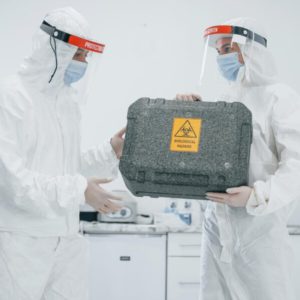Biological hazards are easily found in hospital environments, having as a fundamental preventive measure the need to use personal protective equipment for doctors, nurses and other health professionals.
There are standards and classifications that govern the appropriate containment levels for their handling. However, health institutions must have their own means of dealing with new risks. The implementation of new biosecurity techniques should be adopted whenever existing measures prove to be ineffective.
In the hospital environment, all kinds of risks can be found. In addition to biological ones, there are chemical, physical and various other hazards that can cause accidents. In these places, and in all others, the best way to avoid problems is prevention.
What are biological hazards and where are they found?
Biological risk is considered to exist when there are microorganisms capable of causing diseases in humans, such as viruses, bacteria, protozoa, parasites, fungi, among others.
All people are exposed to these microorganisms all the time, when riding public transport, at school, at the mall, at work and even at home.
However, there are professions in which workers are exposed to a greater number of microorganisms, such as hospital and clinic employees. In these places, this risk is greater.
How to avoid biological risks in hospitals?
Due to this danger of contamination, the National Health Surveillance Agency (Anvisa) created some rules on how hospital waste should be stored and treated in Brazil.
The legislation applies not only to hospitals, but also to research centers, clinics, offices, morgues and laboratories. It prevents contamination of workers and patients and manages to prevent damage to the environment.
Check out some practical measures that can prevent accidental contamination:
- avoid having hand-to-face contact;
- do not apply cosmetics, eat or drink in the laboratory area;
- wear apron, disposable gloves and other necessary Personal Protective Equipment.
Here are 10 biological risk prevention tips:
- Know the Health Services Waste Management Plan
- Offer training to employees and Follow Safety Standards
- Use PPE properly
- Wash your hands before and after any procedure
- Cleaning and Disinfection of Surfaces and Equipment
- Correctly dispose of medical waste
- Hire a specialized company to collect the garbage
- Follow protocols in case of an accident
- Develop an emergency plan
- Use communication to your advantage
Health professionals must be on constant alert, as their lives are at stake at all times. Did you understand the relevance of understanding what are the biological risks in hospitals and what are the tips to avoid them?


